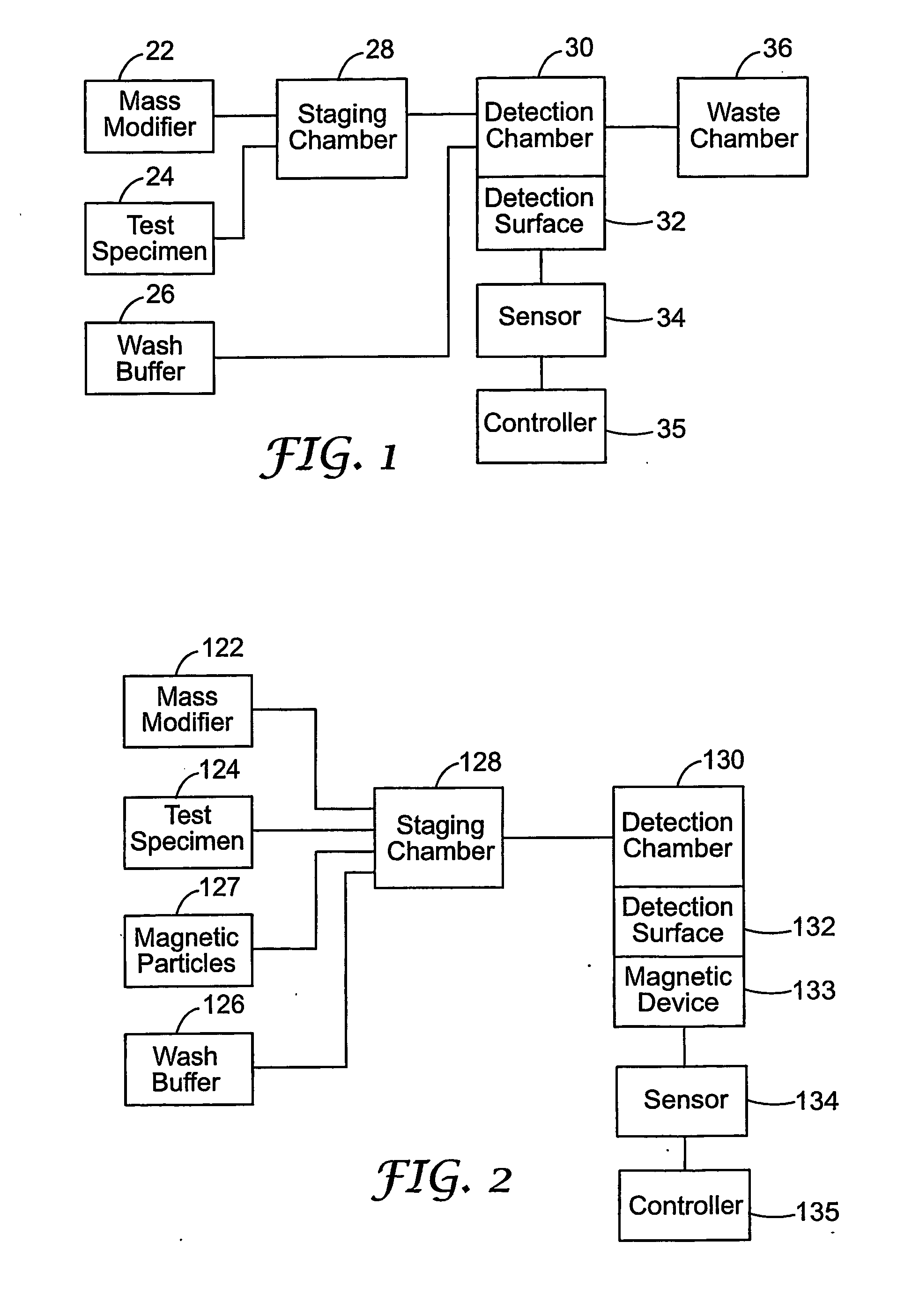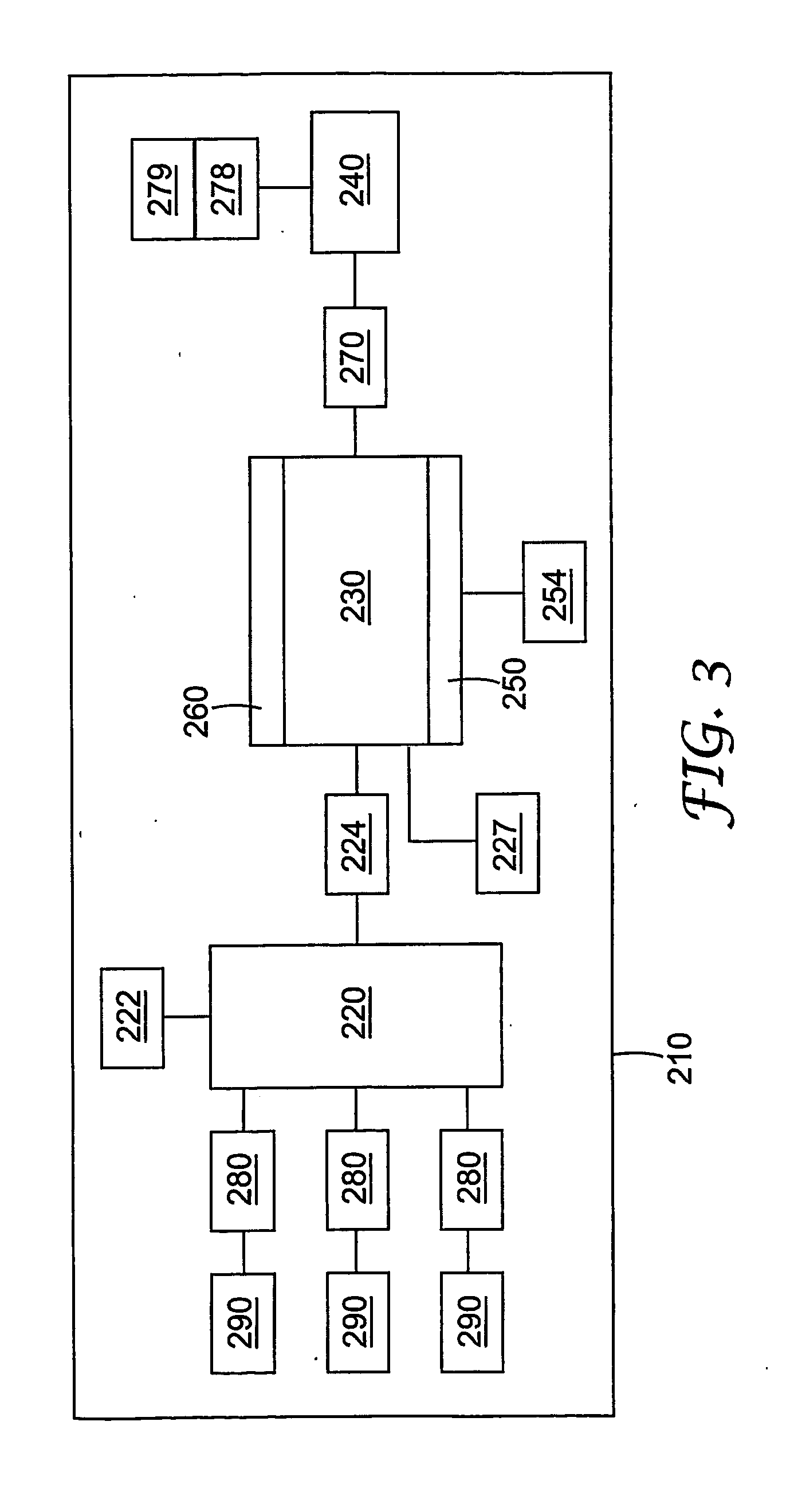Acousto-Mechanical Detection Systems and Methods of Use
a detection system and acoustomechanical technology, applied in the field of acoustomechanical detection systems and methods of use, can solve the problems of affecting the detectable acoustomechanical energy of the sensor, and achieve the effects of facilitating the detection of different target analytes, enhancing the shelf life of materials, and preventing contamination of the interior volum
- Summary
- Abstract
- Description
- Claims
- Application Information
AI Technical Summary
Benefits of technology
Problems solved by technology
Method used
Image
Examples
Embodiment Construction
[0056] In the following detailed description of exemplary embodiments of the invention, reference is made to the accompanying figures of the drawing which form a part hereof, and in which are shown, by way of illustration, specific embodiments in which the invention may be practiced. It is to be understood that other embodiments may be utilized and structural changes may be made without departing from the scope of the present invention.
Effective Mass-Modification
[0057] As discussed herein, effective detection of target biological analyte in sample material using acousto-mechanical biosensors may rely on modification of the effective detectable mass of the target biological analyte within the sample material. Some mass-modification techniques used in connection with the present invention may include, but are not limited to, e.g., fractionating or disassembling the target biological analyte in the sample material, adding a detectable mass to the target biological analyte, exposing ...
PUM
| Property | Measurement | Unit |
|---|---|---|
| diameter | aaaaa | aaaaa |
| volumes | aaaaa | aaaaa |
| volumes | aaaaa | aaaaa |
Abstract
Description
Claims
Application Information
 Login to View More
Login to View More - R&D
- Intellectual Property
- Life Sciences
- Materials
- Tech Scout
- Unparalleled Data Quality
- Higher Quality Content
- 60% Fewer Hallucinations
Browse by: Latest US Patents, China's latest patents, Technical Efficacy Thesaurus, Application Domain, Technology Topic, Popular Technical Reports.
© 2025 PatSnap. All rights reserved.Legal|Privacy policy|Modern Slavery Act Transparency Statement|Sitemap|About US| Contact US: help@patsnap.com



